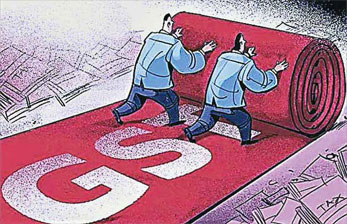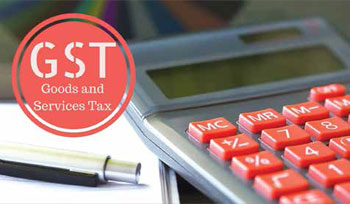The new Goods and Services Tax seeks to do way with a plethora of indirect taxes levied by the centre and states to unify them all into one system across the nation, making way for ‘one country, one market, one tax’. But there are misgivings, mainly stemming from the fear of the unknown. So what is GST, who does it apply to, what are the advantages, and what the grey areas – here is a low-down on what it’s all about...

Unlike the regular tax desk which is manned by a tax officer whose job is to levy tax on you, this desk is manned by a non-serving tax officer who wishes to share his experience of 35 years in the tax department, while, discussing tax provisions. It is advantageous to know how the tax department thinks and acts when, as said by Benjamin Franklin, “In this world nothing is certain except death and taxes”
The famous speech, ‘Tryst with Destiny’, delivered by our first Prime Minister Pandit Jawaharlal Nehru at a midnight session of the Constituent Assembly on the eve of independence, marked the birth of our free country. Seventy years later, on June 30, 2017, there was another midnight session in Parliament, this time to announce the birth of a new taxation system-the Goods and Services Tax (GST). Our Prime Minister Narendra Modi said that just as in the case of our political independence in 1947 when the old regime got banished and the princely states got united to join the declaration of one nation, India, with the introduction of the GST banishes the old taxation system of indirect and state and central taxes to make way for one tax system, thereby allowing for ‘one country, one market, one tax’ coming into existence.
There are variants of GST in 160 countries, most being different shades of VAT, but GST in India is unique because of the mere size of the market it envisages. One market, with 130 crore people with different languages, cultures, racial profiles and different topographies spread over 29 states and seven Union Territories was a gigantic task, but we have now achieved it. The biggest common market earlier was of the European Union (EU) which catered to the collective population of 51 crores, including the six crore population of UK which is now set to go out after Brexit. Our GST is also unique as it is only the second dual system of goods and services after Canada. It is also unique as we have a strong federal structure where 29 states and Union Territories are ruled by different political parties with wide divergence, but all of them came forward unanimously to exhibit a co-operative federalism for formulating the GST. It had also necessitated the passing of the 122nd amendment of the Constitution which was passed unanimously by both the Houses of the Parliament.

It is a reform of big magnitude in our indirect tax system which affects everybody from super rich billionaires to our real poor. The Constitution has provided lists of subjects on which the Central Government and State Governments frame laws and collect taxes. Direct taxes like Income Tax and Corporate Tax are strictly the prerogative of the Central Government while indirect tax was compartmentalised under two parts belonging to the central and state governments. The Central Government part related to taxes like Central Excise, Customs Duty and Service Tax, while the State Sovernment part related to taxes like VAT, Entertainment Taxes, etc. The GST subsumes 17 different taxes of the Central and State Governments except Custom Duty, and brings in place one tax, the GST. This system (GST) also does away with municipal octroi and various types of cess levied on goods and services. Thus, for the entire country, irrespective of state borders, there will be only one tax.
At the moment, GST will be levied at four rates of 5%, 12%, 18% and 28%, in addition to a sizable number of goods and services that stand at 0% rate, or are exempted. Some products like petroleum and alcoholic products have so far have been kept out of GST so as to bring about the unanimous consent of the states.
GST is a destination tax which is levied at the stage of the final buying of the product by the consumer, hence during the supply chain of the product, the input tax is given credit. We can say that the tax becomes leviable on the value added at each stage.
The procedural compliance and collection of tax under GST will be managed 100% online by a newly created entity GSTN which is owned by the Central Government (24.5%), State Governments (24.5%) and financial institutions (51%).
“For the majority of items, prices will go down, as there is no cascading effect of tax on tax. In the supply chain of goods or services, there is a provision for giving credit to input tax and issue of refund. Even with goods falling in the highest tax rate of 28%, the selling price will be less, as the actual incidence of the effect will be 28% minus refund of input tax”
GST is one tax, but to facilitate the collection of this tax it has been divided into the following:

When the sale is within one state then GST and SGST come into play. The trader will pay tax as per the notified rate of the product or services only, but he will divide the payable tax in two parts of 50% each and each 50% part will be paid separately into the CGST and SGST accounts. This will help reaching the tax into the kitty of the Central and State Governments directly without any human interference.
In the case of interstate sale of goods, IGST will be levied at the rate same as the rate of that product, but traders will get the full set-off from the liability of CGST and SGST when he sells the product in the new state where his product has entered. In totality, IGST is wash out tax which does not survive and there is no income under this head. IGST falls in the domain of the Central Government and it has been created for the sole reason of keeping a forensic trail of the movement of goods. On imports, there is no GST. However, in addition to Customs Duty, which is separately levied to identify the footprint of imported goods, IGST is levied which gets set off when the goods are sold.
There is no difference between SGST and UTGST except that one is levied in the state while the other is levied in the Union Territory and both are levied and collected in a similar manner.
People are excited for good theoretical economic reasons, but traders and even some consumers are also nervous for the following reasons:
Finance Minister of India-Chairman Union Minister of State, Revenue or Finance- Member
Minister in charge of Finance or taxation of the state or any nominated Minister-Member
There is no dispute that GST is good for the economy and the country. Initially, there can be some teething problems and that may continue for a maximum of three to six months. The problem can be sorted out by the concerned authorities. There is a need to educate taxpayers and consumers about the new legislation. The government has opened GST Sewa Kendras to help people. Fear of the unknown will go away once people understand the law.
The government is confident that in view of the competitive market, traders and manufacturers will pass on the benefit of reduction of price to consumers though there is a strict and harsh provision of anti-profiteering. People will appreciate the new law once they find that corruption and tax evasion is going down. I sum up in the words of our Prime Minister that GST means ‘Good And Simple Tax’.
By S K Jha